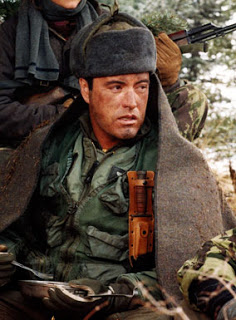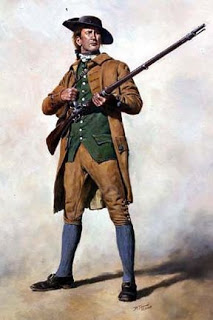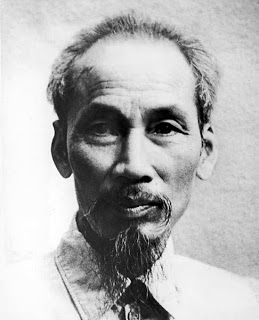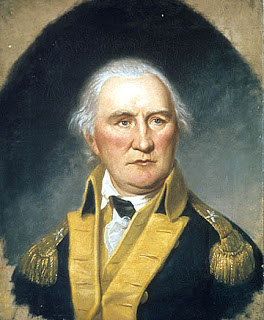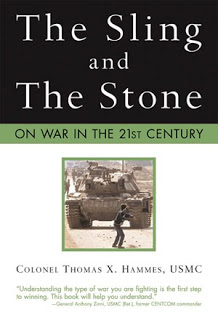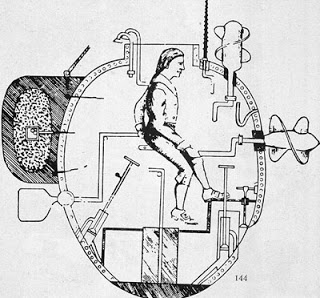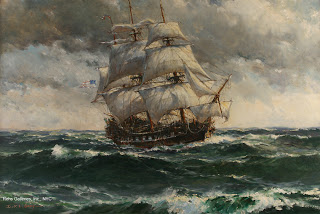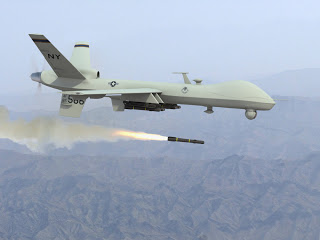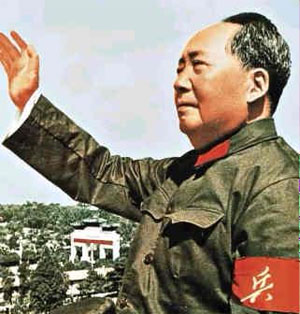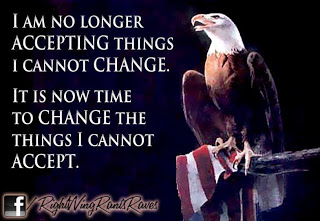The ORIGINAL gathering place for a merry band of Three Percenters. (As denounced by Bill Clinton on CNN!)
Tuesday, April 30, 2013
The seductive siren song of Sunstein, the Killer Tomato.
Long-time readers will recall my allergic reaction to "social scientist" Cass Sunstein (he actually bears as much resemblance to a social scientist as Josef Mengele did to Dr. Albert Schweitzer).
Four years ago almost to the day, I sounded the alarm on Sunstein and his ilk in "Attack of the Killer Tomatoes." Now Sunstein is up to his old "change agent" tricks with this: "Don’t Buy the Slippery-Slope Argument on Guns."
Yup. Definitely a candidate for the war crimes trials, if these collectivist mokes get their way.
Gratifying. The original video of my speech in Hartford passes 20,000 hits.
Link. That's not counting all the embeds out there, either.
Local Jewish newspaper wants 'conversation' about guns; history not invited
"The uncompromising pro-armed citizenry stance of Jews for the Preservation of Firearms Ownership (JPFO) is the only logically defensible--or morally defensible--product of any accurate reading of history."
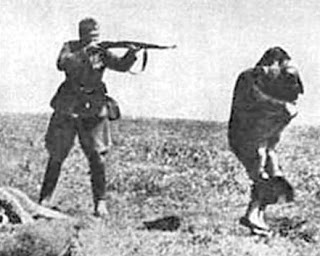
You know, I wonder what this mother would say to them if she and her baby were still alive, that is. Here is my comment there, which I doubt makes it past the moderator:
There is an iconic photograph of a Nazi soldier shooting a Jewish mother holding her baby (easily found at the top of my blog Sipsey Street Irregulars at the link below), and I wonder what she would have to say about the various efforts to disarm the American citizenry. Or the Bielski brothers, for that matter. They knew quite directly what happens when there is a government monopoly of violence. They also could tell you how foolish it is to count on unchecked government to secure anything for you, whether it is your liberty, your property or your lives.The Jews of the Wiemar Republic were quite comfortable with that government's gun registration laws until the Nazis took over -- legally -- and began using those registration lists to disarm their opponents. Do you think there is some sort of house rule that forbids tyranny from coming to America? To believe so is to whistle past the mass graves of history.You are quite correct that there are those of us who are as uncompromising as a brick wall (although putting the NRA in that class merely demonstrates your ignorance of the legislative history of 80 years of gun control laws in this country -- Indeed, the NRA is the least of your worries as you proceed down the slippery slope of progressive citizen disarmament).It has always seemed the twin apices of ignorance and irony that people who advocate citizen disarmament in this country do so in the delusion that this will "stop the carnage" of common criminals and lunatics who use firearms to work their evil will upon people. It is ignorant because you believe that you can accomplish that goal without starting a new American civil war with the likes of us "bitter clingers" and ironic because starting said civil war seems an odd way to "stop the carnage."For we, if not you, have internalized the true lesson of the Holocaust and by extension the founding of the state of Israel. As my good friend Aaron Zelman once observed: "If every Jewish and anti-Nazi family in Germany had possessed a Mauser rifle, twenty rounds of ammunition AND THE WILL TO USE IT, Adolf Hitler would be a footnote in the history of the Wiemar Republic."The Mauser rifle, I might add, was the military pattern "assault weapon" of its day.The difference between you citizen disarmament advocates and us well-armed, well-trained "bitter clingers" is that when we say, "Never again!" we mean it -- and we have the means to make it stick.Mike Vanderboeghhttp://sipseystreetirregulars.blogspot.com
Well, this came as somewhat of a surprise.
'Three Percenters' founder: Wrong to discipline Jersey City police officers.
A group of Jersey City police officers should not have been disciplined for being a part of the "Three Percenters" movement, one of the movement's founders said this morning.In a brief telephone interview from Tennessee, Michael Graham said that he believes the officers have a right to have their own political beliefs -- and in fact that there are many police, firefighters and veterans among the "three percenters."
Apparently "one of the founders" refers to this Facebook page. I guess it was a mistake not to do Facebook, as much as I despise it.
Monday, April 29, 2013
There will be only two posts today, both of them below.
I figure it will take everybody plenty of time to absorb the Absolved excerpt. My suggestion is to print it out and read it at your leisure. Take your time, make margin notes. I will be happy to answer any questions about the content. As always, feel free to copy, link and distribute to as large an audience as possible. I'm taking the rest of the day off to go see a man about a mule. ;-)

Tyrants beware. 4th Generation Warfare: How the next civil war will be fought.
“Direct military operations” are precisely what the 4GW insurgent seeks to avoid. His target is the mind and the will of the political leadership of his enemy -- to be specific, the few inches between their ears which are filled with brains to be influenced or, if not, popped like a grape with an unanswerable rifle shot from distance as an example to the others.
Excerpted from the non-fiction introduction to Absolved: A
cautionary novel of the Three Percent and Fourth Generation Warfare by Mike Vanderboegh.
“Whenever the legislators endeavor to take away and destroy the property of the people, or to reduce them to slavery under arbitrary power, they put themselves into a state of war with the people, who are thereupon absolved from any further obedience and are left to the common refuge, which God hath provided for all men, against force and violence.” ~ John Locke, 2nd Treatise on Government.
So reads the plaque on Phil Gordon's wall in his Sipsey Street home the moment before all hell breaks loose. In 'Absolved', I try to explore the depths of Locke's belief to discover where it might lead the United States in a civil war set in the near future. . .
"The
Useful Dire Warning"
Darryl Bates: What started it?
Col. Andy Tanner: I don't know. Two toughest kids on the block, I guess. Sooner or later, they're gonna fight.
Jed Eckert: That simple, is it?
Col. Andy Tanner: Or maybe somebody just forgot what it was like. -- Red Dawn, 1984.
So why write about one? Perhaps, as David Brin, author of the magnificent book The Postman (which bears no resemblance to the Costner cinematic flop), wrote in a forward to a reprint of Pat Frank's classic Alas, Babylon:
Two books that emerged at roughly the same time as Alas, Babylon were Eugene Burdick's Fail Safe and Peter George's Red Alert, which later inspired Stanley Kubrick to make the magnificently humorous and thoughtful Dr. Strangelove. As archetypes of the useful dire warning, each dissected a specific possible failure mode, bringing it to the awareness of so many that, ironically, their particular type of debacle became much less likely. Indeed, the "self-preventing prophecy" may be the highest and most useful species in all of the vast, imaginative genus of speculative fiction. In much the same way that Orwell's 1984 girded millions against "Big Brother," these tales may have helped to keep their own nightmares from coming true. In other words, our most vivid nightmares may have been utterly practical, helping to save our lives. -- David Brin, Forward to the First Harper Perennial Modern Classics Edition of Pat Frank's 'Alas, Babylon', 2005, p. X.
One wonders what might have happened prior to September 11, 2001 if someone in authority had taken Tom Clancy’s “useful dire warnings” about a pilot deliberately flying a fuel-laden jet into the Capitol building and killing the President and top leadership (Debt of Honor , 1994; Executive Orders, 1996) about enemies of this country crashing airliners into public buildings in Washington, D.C. Clancy himself reacted to the 11 September 1001 attacks by Al Qaeda:
"Four planes? That many people willing to die for the same cause at the same time? If any writer had turned in a story like this, the publisher would have just handed it back and said, 'No way. Not believable.' "
I can only hope that readers will take my own “useful dire warning”
more seriously. If one does ultimately break out, I will be as guilty of
fomenting it as Tom Clancy was guilty of 9/11 -- which is to say not at all. It is precisely what I am trying to avoid. . .
But the vignettes that will hopefully coalesce into a narrative that flows from the terrible opening to a logical conclusion (and I hope a good read in between) are also presented with such detail for a purpose. If this book is to operate as a "useful dire warning," then both real sides in my imaginary civil war must be able to recognize the real threat to avoid the conflict.
You may ask, which sides and what kind of conflict?
On one side, just as in 1775, will be the Three Percent, on the other, Locke’s “Arbitrary Power” -- and it will be a Fourth Generation War. All three concepts require explanation.
But the vignettes that will hopefully coalesce into a narrative that flows from the terrible opening to a logical conclusion (and I hope a good read in between) are also presented with such detail for a purpose. If this book is to operate as a "useful dire warning," then both real sides in my imaginary civil war must be able to recognize the real threat to avoid the conflict.
You may ask, which sides and what kind of conflict?
On one side, just as in 1775, will be the Three Percent, on the other, Locke’s “Arbitrary Power” -- and it will be a Fourth Generation War. All three concepts require explanation.
The “Arbitrary Power”
"If I could have gotten 51 votes in the Senate of the United States for an outright ban (on so-called semi-automatic ‘assault rifles”), picking up every one of them . . . Mr. and Mrs. America, turn 'em all in, I would have done it.” – Senator Dianne Feinstein, CBS-TV's 60 Minutes, 5 February 1995.
When the Founders declared
independence, they prefaced that declaration with a detailed indictment of the
offenses of the King and his ministers. I
will not waste time or space here by comparing the present federal government’s
excesses of arbitrary power with those of King George III. Go and read the Declaration and you will
marvel at how today’s advocates of central power not only track quite closely
but make Lord North and Company look like kindergarten bullies in comparison.
The important thing to
understand about today’s arbitrary power is that it, like its predecessor, is a
corruption of – indeed, a subversion of – a constitution that should have
restrained it. It was the failure of the
English Constitution which led to our first Revolution. It will be the failure of our own Constitution
which will lead to our next civil war.
A key reason the revolution succeeded was its strictly limited scope. The Founders sought only liberty, not equality or fraternity. They aimed to make a political revolution, not a social or an economic one. Their Lockean social-contract political philosophy taught them that the preservation of individual liberty was the goal of politics. Its basis was the surrender of a portion of man’s original, natural freedom to a government that would protect the large remainder of it better than any individual could do on his own — the freedom to make your own fate and think your own thoughts without fear of bodily harm, unjust imprisonment, or robbery. The Founders’ study of history taught them that the British constitution under which they had lived — “originally and essentially free,” as Boston preacher Jonathan Mayhew described it — was the ideal embodiment of such a contract. It was “the most perfect combination of human powers in society,” John Adams wrote in 1766, “for the preservation of liberty and the production of happiness”—until George III began to violate it. So Americans didn’t take up arms to create a new world order according to some abstract theory. They sought only to restore the political liberty they had actually experienced for 150 years, and they constructed their new government to preserve it. . .So when, after 150 years of letting Americans run their own affairs, the British government began to meddle malignly with their liberty once 22-year-old George III became king in 1760, following the death of his grandfather, George II, the colonists unsurprisingly responded to the interference with outrage. After decreeing new colonial customs duties and stricter enforcement in 1764, London imposed its first direct levy on the colonies in 1765 in the Stamp Act, taxing every colonial newspaper, journal, legal document, almanac, playing card, and other paper product, in flagrant contravention of the “standing Maxim of English Liberty,” as Livingston had quoted it more than a decade earlier, “ ‘that no Man shall be taxed, but with his own Consent.’ ” As Washington wrote to a friend, “I think the Parliament of Great Britain hath no more Right to put their hands into my Pocket, without my consent, than I have to put my hands into your’s, for money.” Property doesn’t belong to the government, and the social contract gives government no right to tell you what to do with your own.The American Revolution, then, was doubly limited in its aims: limited to making only a political change without altering social or economic arrangements, and determined to set strict limits to its new government, fearful that any governmental power beyond the barest minimum necessary to protect liberty too easily could become a threat to liberty itself. . . – The Americanism of the American Revolution, Myron Magnet, City Journal, Autumn 2012.
And, as we now know, the
Founders’ system of limited government has been crushed by a century of
encroaching Federal power.
"All laws which are repugnant to the Constitution, are null and void." Chief Justice Marshall, Marbury v. Madison
The advocates of the “arbitrary power,” of
course, say that they have the right to tell you what to do because they were
“democratically elected,” ignoring the fact that the Founders themselves feared
pure democracy as much or more as they feared any other kind of tyranny. Without the limits of a constitutional
republic, “democracy” is three wolves and a sheep voting on what to have for
dinner. The fact that the “arbitrarians”
win elections claiming “mandates” and have rigged the court systems to prevent
their diktats from being overturned means nothing to people who, like the
Founders, believe that their rights to liberty and property are God-given and
inalienable. The most uncompromising of
these are the Three Percent.
The
Three Percent – the so-called “bitter clingers.”
The Revolutionary War in the southern states has received little attention in comparison to the detailed study given the campaigns in the North. This is unfortunate since much decisive action took place there, but perhaps the nature of the struggle accounts for the historians’ neglect. The heroes of the southern fighting were not the officers of the Continental army but rather the natural leaders of the people, who had learned their skills in the continuing effort to seize the land of the Indians.
By achieving better perspective of the past, something may be accomplished in the present. For the hero of this book has fallen on evil times. He is called various unflattering names today and is the butt of comic-strip buffoonery and the ‘villain’ of serious novels. Because he remains an individualist, he is a safe target.
There’s nothing new in this attitude, of course. In the Revolutionary War period, he was sneered at by the rich merchants of the lowlands, he was held in contempt by the Continental army’s high command, and he was considered less than human by the British. Major Patrick Ferguson called him a bandit, a barbarian, a mongrel. He had little respect for law and order. He could be quite ruthless. He was also superstitious and at times naïve. Yet Theodore Roosevelt could write of him:
‘The fathers followed Boone or fought at King’s Mountain; the sons
marched south with Jackson to overcome the Creeks; the grandsons
died at the Alamo.’
And, it should be added, the great-grandsons provided Lee and Johnson with the best fighting infantry the world had yet seen. Poorly clothed, half-starved, they responded magnificently to magnificent leadership and almost won America’s second civil war as their forefathers had won the first.
Moreover, in wars since, they have always been the cutting edge. As F.N. Boney, the Georgia historian, puts it: ‘There is no shortage of rednecks in the neat, quiet American military cemeteries which now dot the globe. However rejected in normal times, the redneck has always been welcomed when the nation went to war.’
Peace is the dream today, and the redneck shares that dream. For him it was often a “rich man’s war and a poor man’s fight.” He never started a war, but he was always ready when his home and personal liberty were threatened. And because of the readiness to do his duty, this nation was founded and kept alive….
Given proper leadership, the mountain man can still be motivated. But in recent years such leadership has been largely lacking. The potential remains untapped, but it is there. As my father used to say in Happy Valley-- you may turn the damper up, you may turn the damper down, but the smoke goes up the chimney just the same.” -- Hank Messick, King’s Mountain, 1976.
History, for good or ill, is made by determined minorities. It is estimated that during the American Revolution, the active forces in the field against the King's tyranny never amounted to more than 3% of the colonists. They were in turn actively supported by perhaps 10% of the population. Cheering on these dedicated revolutionaries were perhaps another 20% who favored their cause but did little or nothing to support it. Another one-third of the population sided with the King (by the end of the war there were actually more Americans fighting FOR the King than there were in the field against him) and the final third took no side, blew with the wind and took what came.
The Three Percent still exists today, described by Barack Obama a few years ago as “bitter clingers.” Put simply, these are firearm owners who will not disarm, will not compromise and will no longer back up at the passage of the next gun control act.
Today’s Three Percenters say quite explicitly that they will not obey any further circumscription of their traditional liberties and will defend themselves if attacked.
They intend, like John Locke and the Founders who studied him, to maintain their God-given natural rights to liberty and property, and that means most especially the right to keep and bear arms. Thus, they are committed to the restoration of the Founders' Republic, and are willing to fight, die and, if forced by any would-be oppressor, to kill in the defense of themselves and the Constitution that they all took an oath to uphold against enemies foreign and domestic.
It is the sons of Three
Percenters who make up the bulk of the tip-of-the-spear units in today’s
military simply because they were raised by families to whom service to the
Republic is as automatic as breathing.
Socio-economically, today’s Three Percenters are not exclusively the
descendants of the Scotch-Irish that Hank Messick describes above, but they are
surely represented heavily. So, too, are
descendants of the Texans, of whom S.C. Gwynne wrote in Empire of the Summer
Moon:
The (vanguard of the) westward push of the Americans. . was not federal troops and federal forts but simple farmers imbued with a fierce Calvinist work ethic, steely optimism, and a cold eyed aggressiveness that made them refuse to yield even in the face of extreme danger. They were said to fear God so much that there was no fear left over for anyone or anything else . . . –Page 20.
When the Texans discovered the
tactical utility of the Colt’s revolver gave them parity with the fearsome
Comanche lance on horseback, it spelled the end of that tribe’s ceturies long
dominance of the plains.
(T)he game had changed completely. The Texans were not the Spanish or the Mexicans. They were tougher, meaner, almost impossible to discourage, willing to take absurd risks to secure themselves a plot of dirt, and tempermentally well-suited to the remorseless destruction of native tribes. They did not rely on a cumbersome, heavily-mounted, overly bureaucratized, state-sponsored soldiery; they tended to handle things themselves, with volunteers who not only were not scared of Indians but actually LIKED hunting them down. – Page 82.
Texans certainly ranked among
the Three Percenters of their day.
Three Percenters today do not claim that they represent 3% of the American people, although they might. That theory has not yet been tested. They DO claim that they represent at least 3% of American gun owners, which is still a healthy number somewhere in the neighborhood of 3 million people. Remember, history, for good or ill, is made by determined minorities. They are one such minority. So too are the current domestic enemies of the Founders' Republic who seek to disarm them. What remains, then, is the test of will and skill to determine who shall shape the future of our nation.
That test of will and skill will be fought by warfare in the Fourth Generation.
"Cherish your enemies - they teach you the best lessons" -- Ho Chi Minh.
Fourth Generation Warfare
For those unfamiliar with the term, here's one succinct definition from the best single book on the subject:
(Fourth Generation Warfare) uses all available networks -- political, economic, social, and military -- to convince the enemy's political decision makers that their strategic goals are either unachievable or too costly for the perceived benefit. It is an evolved form of insurgency. Still rooted in the fundamental precept that superior political will, when properly employed, can defeat greater economic and military power, 4GW makes use of society's networks to carry on its fight. Unlike previous generations, it does not attempt to win by defeating the enemy's military forces. Instead, via the networks, it directly attacks the minds of enemy decision makers to destroy the enemy's political will. Fourth-generation warsarelengthy -- measured in decades rather than months or years. . . Strategically, 4GW attempts to directly change the minds of enemy policy makers. This change is not to be achieved through the traditional method of superiority on the battlefield. The first- through third-generation of destroying the enemy’s armed forces and his capacity to regenerate them is not how 4GW enemies will attack . . . Both the epic, decisive Napoleonic battle and the wide-ranging, high-speed maneuver campaign is irrelevant to them. Their victories are accomplished through the superior use of all available networks to directly defeat the will of the enemy leadership, to convince them their war aims are either unachievable or too costly. These networks will be employed to carry specific messages to our policy makers and to those who can influence the policy makers. -- COL Thomas X. Hammes, USMC, The Sling and the Stone, p. 208
And what were the previous three generations? William S. Lind offers this in his essay, the Four Generations of Modern Warfare at the Lew Rockwell blog:
The First Generation of modern war began with the Peace of Westphalia in 1648, which ended the Thirty Years War. It also marked the state's assumption of a monopoly on war; thereafter, war became something waged by states, for raison d'etat, with state armies and navies doing the fighting. The First Generation ran from 1648 to about the time of the American Civil War, and it was characterized, on the whole, by a battlefield of order. The battlefield of order created a military culture of order, which endures to this day.
And there's the rub. For around the middle of the 19th century, the battlefield of order began to break down. Ever since, state militaries have had to grapple with a growing contradiction between their internal culture of order and the external reality of an increasingly disordered battlefield.
The Second and Third Generations represent two different approaches to that problem. Second Generation war was developed by the French Army during and after World War I, and is best summed up with the French saying, "The artillery conquers, the infantry occupies." Also known as firepower/attrition warfare, Second Generation war maintained the First Generation culture of order. Decision-making was centralized and hierarchical; orders were detailed and controlling, to permit synchronization of all arms; time was not particularly important; and success was measured by comparative body counts. Second Generation armed forces focus inward on methods, processes and procedures, prize obedience over initiative (initiative and synchronization are not compatible) and depend on imposed discipline. The American Army and Marine Corps learned Second Generation war from the French during the First World War and still practice it today, with exceptions based on individual commanders.
Third Generation war, also known as maneuver warfare, was developed by the German Army in World War I; by 1918, Blitzkrieg was conceptually complete, lacking only the tanks necessary for operational mobility. The Prussian/German roots of Third Generation war go back earlier, to the Scharnhorst reforms that followed Prussia's defeat by Napoleon. One of those reforms changed what was required of a Prussian officer; instead of being responsible for obeying orders, he became responsible for getting the result the situation required regardless of orders (in 19th century war games, it was common for junior Prussian officers to be given problems that could only be solved by disobeying orders). This in turn created a military culture that was focused outward, on the enemy, the situation and the result the situation demanded instead of inward on rules, orders and processes. In effect, Prussia had broken with the First Generation culture of order.
The new Third Generation tactics developed by the Germans in World War I were the first non-linear tactics. On the defense, the objective became sucking the enemy in, then cutting him off, rather than holding a line. On the offensive, the attack flowed like water through the enemy's defenses, always seeking the weakest point to penetrate, then rolling him up from his own rear forward. Operationally as well as tactically the goal was usually encirclement. Speed replaced firepower as the most important tool, and dislocation, mental as well as physical, was more important than attrition. Culturally, not only was the German Army outward-focused, it prized initiative over obedience and it depended on self-discipline rather than imposed discipline.
Much of the American military reform movement of the 1970s, 80s and early 90s was an attempt to move the American armed forces from the Second to the Third Generation. While the Marine Corps formally adopted maneuver warfare as doctrine in the 1990s, most of what the Marine Corps does remains Second Generation. The other American services remain almost wholly Second Generation, to the frustration of many junior officers.
Fourth Generation war is the greatest change since the Peace of Westphalia, because it marks the end of the state's monopoly on war. Once again, as before 1648, many different entities, not states, are fighting war. They use many different means, including "terrorism" and immigration, not just formal armies. Differences between cultures, not just states, become paramount, and other cultures will not fight the way we fight. All over the world, state militaries are fighting non-state opponents, and almost always, the state is losing. State militaries were designed to fight other state militaries like themselves, and against non-state enemies most of their equipment, tactics and training are useless or counterproductive.
Daniel Morgan
“Sure won’t his Majesty’s Government train them for me?”
Of course there have been Fourth Generation insurgencies for thousands of years, as well as the use of 4GW tactics and strategies by state militaries against other state militaries. (See Sun Tzu’s The Art of War.) The American Revolution began as an insurgency of largely non-state actors and used militia guerrilla tactics throughout the war even after the development of the Continental Line. (See Paul Revere’s Ride and Washington’s Crossing by David Hackett Fischer.)
The most remarkable and effective field commander of the Revolutionary forces was Daniel Morgan, whose ability to integrate militia and regulars at the battle of Cowpens set up Cornwallis’ ultimate defeat at Yorktown. (See A Devil of a Whipping by Lawrence F. Babits, also Daniel Morgan: Revolutionary Rifleman by Don Higginbotham.)
A veteran of the French and Indian War, Morgan commanded one of Virginia’s two rifle companies sent to support the Siege of Boston in late June 1775. Morgan had served as an officer in the Virginia Colonial Militia since the French and Indian War. He recruited 96 men in 10 days and assembled them at Winchester on 14 July. He then marched them 600 miles to Boston in only 21 days, arriving on Aug. 6, 1775. Known as Morgan’s Riflemen, they soon discouraged British raids out of Boston with the accuracy of their long-range fire, something the British could not match. He also initiated tactics which first targeted the British formation’s Indian guides, then their officers, then their NCOs. The British found this to be “barbaric.”
Morgan was an impressive field commander, big in size yet poorly educated, he enjoyed drinking and gambling but the troops never forgot who was in command. Morgan had served as a civilian teamster during the French and Indian War. After returning from the advance on Fort Duquesne by General Braddock's command, he was punished with 499 lashes (a usually fatal sentence) for punching his superior officer. Morgan, not surprisingly, hated the British army. He later served as a rifleman in the Provincial forces assigned to protect the western border settlements from French-backed Indian raids, and in 1774 he served in Dunmore's War, taking part in raids on Shawnee villages in the Ohio Country.
During the Saratoga campaign, Morgan’s riflemen played a key role at the preliminary battles of Freeman’s Farm and later at Bemis Heights, where at his order the British General Fraser was mortally wounded at his order by rifleman Tim Murphy. This was the single most important rifle shot of the war, since the loss of Fraser caused the British attack to collapse and the subsequent surrender of the entire British force persuaded the French to enter the war.
After Cowpens, Morgan went home on sick leave, but he had certainly paid the British back for those 499 lashes. There were many Revolutionary officers and men who had acquired their military experience in the French and Indian War. And like Morgan, many of them had also acquired an acute understanding of what the British army could and could not do in the terrain of North America.
This formation of young soldiers in the crucible of war is a constant found throughout history. The primary lessons were moral ones, not military. And morale is critical in 4GW.
As Hammes describes in the beginning of The Sling and the Stone:
From 1987 to 1990, I got a small taste of the practical aspects of insurgency. I spent those years training insurgents in various locations of the world. This was the tail end of the Cold War and the United States still had vested interests in the outcome of a number of insurgencies. The most intriguing part of the tour was the opportunity to talk to these men. I was particularly impressed with two aspects of the men I met. First was their utter determination to continue the struggle despite the odds. They were not deterred by fear of death. In each case, they were engaged in a struggle with a government force that possessed many times their military power. In each case, they knew the odds and were not deterred. They believed in their cause and were sure that belief was powerful enough to defeat the government. The idea they fought for was central to their resistance. In fact, they were counting on political power generated by that idea to neutralize the overwhelming military power of the government. As I worked with these men, I realized this fact should be obvious to Americans. An idea kept our American revolution alive during seven long years of war. (Emphasis supplied, MBV. It should also be noted that for most of the key leaders of our Revolution, the struggle began a decade earlier with the Stamp Act crisis.)
The second outstanding trait was the remarkable ingenuity they displayed for overcoming problems. Whether the problems were tactical, logistical, doctrinal, or political, they often attacked them from a direction that simply would not occur to a Western-trained soldier. I found insurgents are not impressed with conventional power. They respect it but seek ways around it -- and have consistently succeeded in finding those ways. They often used tactics and techniques that were outside the training and experience of the government forces. Despite years of war, they consistently surprised government forces with their ingenuity and determination. Insurgents are living proof of why man is at the top of the food chain. We are the most creative, treacherous, loyal, aggressive, and determined life form to yet evolve. Any nation that assumes it is inherently superior to another is setting itself up for disaster.
I would add to that last sentence that the same goes for political elites, only more so. This is perfectly understood by 4GW fighters.
Michael Collins, perhaps the 20th Century’s most accomplished virtuoso in 4GW, fought in the disastrous 1916 Easter Rising, and afterward was being paraded with other prisoners through the streets of Dublin on their way to prison.
Michael Collins
As the column passed the ruins of Liberty Hall, a young woman caught up with her cousin (Collins) and called out to him. “What will you do now?” “Do?” asked Collins, “Do? Sure I’ll get ready for the next round of course. I’ve got some of the names taken down already . . . The best of men.” His cousin was flabbergasted. “But …. What? . . . How are you going to train them?” she called out. Collins replied, “Sure won’t His Majesty’s Government train them for me?” (See Michael Collins by Tim Pat Coogan. Also, Collins’ best field commander in West Cork, Tom Barry, was a British Army veteran of the Iraq theatre during World War One. See Barry’s Guerilla Days in Ireland.)
This is something that the governments who seek to fight 4GW don’t understand. The 4GW warrior thinks in terms of decades, not months or years. He or she will fight until victory or death. The long wars in Iraq and Afghanistan, then, can also be seen as universities for American armed citizens in 4GW tactics and techniques.
So, who invented 4th Generation Warfare?
Says Hammes in The Sling and the Stone:
This new form of war did not arrive on the scene as a fully developed instrument but has evolved over decades and continues to evolve at widely scattered locations. We are not in the middle of a revolution in military affairs but rather an evolution.
Different authors assign different origins to 4GW. Hammes traces it to Mao Tse-Tung, yet we know that much of Mao’s theory was based upon the ancient Sun Tsu. Hammes then discusses the “Vietnamese modification” and the “Sandanista refinement.” In each of the latter cases the insurgents were fighting for control of the mindset of the United States Congress through popular opinion within our country. But of course this is precisely how the Founders of our own country defeated the British -- the defeat at Yorktown caused Lord North’s government to collapse and the new government that replaced it came in with a promise to end the North American war, which it promptly did.
(For more on the Vietnamese example, see Street Without Joy by Bernard B. Fall, who suggests that the principal theorist of 4GW on the communist side was neither Ho Chi Minh nor Vo Nguyen Giap but Truong-Chinh.)
The American example also inspired Michael Collins, who added his own improvisation which proved decisive:
Collins evolved a new concept of guerrilla warfare that in time would be copied by guerrilla leaders all over the globe from Mao to Shamir. The Collins philosophy was based not on the capture of enemy bricks and mortar, but of its information. Traditionally Dublin Castle, the seat of British administration in Ireland, had used a network of spies and informers to infiltrate and then snuff out movements directed at securing Irish independence. Collins perfected a system of spying on the spies. Every important branch of the Castle system, whether it was banking, policing, the railways, shipping, the postal service -- whatever -- was infiltrated by his agents. These were not highly trained, CIA-style operatives, but ordinary men and women, little people whom nobody had ever taken notice of before. Collins gave them a belief in themselves, a courage they did not know they possessed, and they in return gave him a complete picture of how their masters operated. . . For the first time in their history the Irish had a team of assassins trained to eliminate informers. . .
Held back from making a full-scale use of their Army by the force of world opinion -- largely Irish-American opinion -- the British tried to fight a “police war’ carried on by hastily-formed forces of ex-servicemen and officers troubled by little discipline and less conscience. The Black and Tans and the Auxiliaries wrote new chapters of horror in the bloodstained story of the Anglo-Irish relationship. Reprisals for the activities Collins and his colleagues included the burning of homes and creameries, random murder and the widespread use of torture . . .
In addition to his campaign of warfare, he ran a national loan, which was banned by the British so that either its advertisement or sale became illegal. Yet the loan was fully subscribed, and every subscriber got a receipt.
(Again, see Michael Collins by Tim Pat Coogan, as well as G2 In Defence of Ireland: Irish Military Intelligence 1918-1945 by Maurice Walsh.)
As brilliant as he was, Collins would later claim that he drew much of his own inspiration from the lessons learned by the Boer commando Christiaan Rudolph de Wet.
British General Rupert Smith, in his very useful book The Utility of Force, passes over the American Revolution with a few words and then identifies the “war amongst the people” (his term for 4GW) as being invented by the Spanish and Portuguese guerrillas in their “little war” against Napoleon’s forces.
It is safe to say that 4GW has been evolving over at least the past couple of centuries, not the decades Hammes suggests, and certainly in terms of timeline, the American revolutionaries of 1775 can lay as good a claim as any to being its inventors. This is an opinion that the current American Three Percent have no problem adopting.
However, a 4GW civil war waged
by men and women who are loyal to the Founders’ concepts would not fight an unrestrained
Al Qaeda campaign but one specifically targeted to spare civilians and to
target the war decision makers. The next
American civil war will either successfully break new ground in 4GW tactics and
techniques or it will descend into a welter of blood and massacre. Governments have a tendency to do that when
they’re losing. The 4GW warriors who
claim to represent the Founders’ Republic will have to require of themselves far more
discipline and intelligence -- no Fort Sumters and no Oklahoma City bombings.
The Utility of Force by a Regime to Impose its Will, or Lack Thereof.
The Utility of Force by a Regime to Impose its Will, or Lack Thereof.
War amongst the people is both a graphic description of modern warlike situations, and also a conceptual framework: it reflects the hard fact that there is no secluded battlefield upon which armies engage, nor are there necessarily armies, definitely not on all sides. To be clear: this is not asymmetric warfare, a phrase I dislike invented to explain a situation in which conventional states were threatened by unconventional powers but in which conventional military power in some formulation would be capable of both deterring the threat and responding to it. War amongst the people is different: it is the reality in which the people in the streets and houses and fields -- all the people, anywhere -- are the battlefield. Military engagements can take place anywhere : in the presence of civilians, against civilians, in defense of civilians. Civilians are the targets, objectives to be won, as much as an opposing force. . . Labeling wars as asymmetric is to me something of a euphemism to avoid acknowledging that my opponent is not playing to my strengths and I am not winning. -- General Rupert Smith, The Utility of Force: The Art of War in the Modern World, pp. 5-6
The advocates of the disarmament of the American populace such as the aforementioned CSGV always begin by saying that no group of citizenry can oppose the might of the federal government because of the vast array of weaponry including aircraft, artillery and even nuclear weapons that the federals could bring to bear if they are opposed trumps any number of armed “insurrectionists” with rifles. This ludicrous argument is not only contradicted by many examples throughout history but begs the moral question of resistance to a predatory government itself. If a government is so depraved as to use nuclear weapons against its own people on its own soil, it will not long survive the condemnation of even the people who otherwise support it. The same goes for artillery and air strikes, even so called “surgical, decapitation operations.” (More about that in a minute.) Such weapons are, in 4GW, merely expensive but useless, appendages, especially in an uncontrolled media environment.
The fact that CSGV and its collectivist familiars even suggest the nuclear boogeyman as a real threat by the federal government merely marks them as moral pariahs -- inciters of holocaust -- and tells you everything you need to know about such people. THEY are apparently the ones who are willing to see millions of their own citizens dead in pursuit of gun control and a government monopoly on violence. They are bloodthirsty people indeed.
The utility -- practical or moral -- of using even precision-guided munitions from artillery or aircraft in a civil war upon your own people, in your own territory and athwart your own logistics tail is also militarily problematic, especially in a media environment that includes the Internet, even more especially in a country such as the U.S. which depends upon it for so much of its own economic activity that it cannot be totally shut down.
First, such strikes are not entirely “precision-guided” as we have seen in Iraq and Afghanistan, leading to “collateral damage” (a sanitary military euphemism for dead civilians) and moral discredit. Remember such a civil war would be “amongst the people” in General Smith’s term and for their loyalty. Thus any smart 4GW operator is going to eliminate the possibility of his side creating “collateral damage.” Notice I said “eliminate the possibility.” Only a fool or a government agent would try to advance his or her cause by committing an Oklahoma City bombing with a day-care full of innocent kids in it. Remember, too, that 4GW warfare is designed to change the minds of the war making elite in their opponent’s capitol. OKC bombings merely strengthen their hand, not discredit it. (Recall that after he was re-elected in 1996, Bill Clinton told reporters on Air Force One while traveling back to DC from Arkansas that “Oklahoma City broke the spell.”)
Indeed, if you are looking for a weapon that is in fact “precision-guided” you need look no further than a bolt-action rifle aimed at an identified target and wielded by someone who knows what to do with it. This, in fact, defines the Three Percenters, who, being limited to rifles, know them very well and compete with each other to win competition matches somewhere in this country every weekend. Can this be why Senator Dianne Feinstein -- a long-time advocate of “turn ‘em in, Mr. and Mrs. America” -- is so obsessed with “sniper” rifles that can “puncture a limousine” or “take down an aircraft”? (See “A Short History of Long Range Shooting in the United States” by Hap Rocketto in The Rifleman’s Journal, September 2009.)
Second, such bad publicity might be endured if the civil war was quickly put to an end by such tactics, but in 4GW this is not only uncertain, it is fantasy.
The final critical characteristic of 4GW is that its timelines, organizations, and objectives are different from those of earlier generations. Of particular importance is understanding that the timelines are much longer. . .
The United States wants to fight short, well-defined wars. We went into Vietnam, Bosnia, Kosovo, Afghanistan, and Iraq convinced we could “clean it up” quickly. In each conflict, our leaders told the people we would be out in a year or so. . . For the United States, a long war is five years . . .
Unfortunately, 4GW wars are long. The Chinese Communists fought for twenty-eight years (1921-1949). The Vietnamese Communists fought for thirty years (1945-1975). The Sandinistas fought for eighteen years (1961-1979). The Palestinians have been resisting Israeli occupation for twenty-nine years so far (1975-2004). The Chechens have been fighting for more than ten years -- this time. Al-Qaeda has been fighting for their vision of the world for twenty years, since the founding of MAK in 1984. Numerous other insurgencies have lasted decades. Accordingly, when getting involved in a 4GW fight, we should be planning for a decades-long commitment. From an American point of view, this may well be the single most important characteristic of 4GW.
Next, we need to understand that 4GW organizations are different. Since Mao, 4GW organizations have focused on the movement’s long-term political viability rather than its short-term tactical effectiveness. They do see themselves as military organizations but as webs that generate the political power central to 4GW. Thus, these organizations are unified by ideas. The leadership and the organizations are networked to provide for survivability and continuity when attacked. And the leadership recognizes that their most important function is to sustain the idea and the organizations -- not simply to win on the battlefield. -- COL Thomas X. Hammes, USMC, The Sling and the Stone, p. 221-2.
Much is made in Third-Generation Warfare of “getting inside the enemy’s OODA Loop” (for observe, orient, decide, and act) in order to disrupt their operations. Hammes points out that 4GW warriors don’t even try.
Finally, because of the long timelines, even the objectives are different. Fourth-generation-warfare opponents do not seek to service more targets faster to disrupt an enemy’s OODA loop. They do not seek to destroy an opponent’s industrial base using the U.S. Air Force’s concept of targeting key segments of an opponent’s society. Nor do they seek to dislocate the enemy’s armed forces so that their decision cycle fails and the enemy collapses. In fact, it is essential to 4GW strategists that the opponent complete his strategic OODA loop -- with the resulting decision that the war is too costly to continue. -- Hammes, Ibid.
For the government monopoly of force advocates of CSGV, I would like to point out that it is impossible to nuke an idea to extinction, especially on your own soil.
Hammes concludes the chapter:
Fourth-generation-warfare opponents focus on the political aspects of the conflict. Because the ultimate objective is changing minds of of the enemy’s political leadership, the intermediate objectives are all milestones in shifting the opinion of the various target audience audiences. They know that time is on their side, Westerners in general, and Americans in particular, are not known for their patience. We are not a people who think in terms of struggles lasting decades. Fourth-generation-warfare enemies will not seek immediate objectives but a long term shift in the political will of their enemies. They will accept numerous tactical and operational setbacks in pursuit of the goal.
Colonel Harry Summers noted in his book On Strategy: A Critical Analysis of the Vietnam War that after the war he told a North Vietnamese colonel that the United States had never been beaten on the battlefield. The North Vietnamese replied, “That is true. It is also irrelevant.” It is essential to understand that 4GW opponents do not focus on swift battlefield victories. They focus on long term strategic approach. They focus on winning wars, not battles. -- Hammes, Ibid.
In an American civil war between an ideas-based Three Percent and a disarmament-bent federal government, who then would lose interest first? You cannot destroy an idea, not even an obviously bad and evil one -- witness collectivism in all its forms. And Hammes further points out “At the operational level, all an opponent has to move is ideas. (Emphasis supplied, MBV.) He can do so through a wide variety of methods, from email to snail mail to personal courier to messages embedded in classified advertisements. He will try to submerge his communications in the noise of the everyday activity that is an essential part of modern society. It will be extraordinarily difficult to detect the operational level activities of a 4GW opponent.” (Page 218.)
Yes, it will. Especially in a civil war set in your own highly-developed country.
Potential 4GW Civil War Targeting: The Federal Government’s and the Three Percent’s
Military Target (ordnance)
Any industrial plant, city, or other object, or any person, group of persons, or force marked as a target for destruction, damage, injury, or capture because of its direct or indirect use in the conduct or support of an enemy's military endeavor.
In restricted usage, a military person, force, installation, or area marked as a target because of its use, or potential use, in direct military operations.
McGraw-Hill Dictionary of Scientific & Technical Terms, 6E, Copyright © 2003
This definition is made obsolete by 4GW because “direct military operations” are precisely what the 4GW insurgent seeks to avoid. His target is the mind and the will of the political leadership of his enemy -- to be specific, the few inches between their ears which are filled with brains to be influenced or, if not, popped like a grape with an unanswerable rifle shot from distance as an example to the others.
Let us make an example of the difference by briefly war-gaming the American Revolution using present-day 4GW tactics.
David Bushnell's Turtle
Early in the war, the following incidents occur:
Benjamin Franklin arranges a coordinated attack by David Bushnell in his submersible and John Paul Jones in the Ranger on English commercial shipping in the Thames estuary -- right at the King‘s doorstep in full view of horrified Englishmen who never thought the war would come there. Bushnell has greater success against the commercial shipping because their wooden hulls are not copper-sheathed as are British military hulls. This “infernal device” which strikes without warning or even apparent effective countermeasure frightens British shippers. Bushnell, John Paul Jones and his surviving crew are taken prisoner, but the very destructive raid, which also sets a large portion of the London docks ablaze, is just as stunning, if not more so, than the Doolittle Raid on Tokyo in 1942.
The Ranger
Meanwhile, Franklin dispatches a trio of riflemen by way of a neutral port into London. One fine day, when Lord North emerges from his country estate, he is killed by an aimed shot from 300 yards away. His wife, standing next to him, is unharmed. (NOTE: Lord North is targeted, but not the King. Under 4GW rules the King would be sacrosanct, just as an American President in the 21st Century would be. Anyone around them, however, would be fair 4GW targets if involved in the decisions or operations which oppress their own people. Remember, the point of 4GW is to destroy the will of the enemy elite to proceed with the war, not give them motivation to win, or provide them a propaganda coup to use with the people.) After North is replaced, the replacement King‘s minister is shot as well in identical circumstances.
Simultaneously, Franklin activates a third group already living quietly in England to attack by arson the buildings of the British East India Company, Lloyds of London and the Company of the Bank of England. They do this at night so there are no civilian casualties, although several adjoining structures are inevitably destroyed as well.
The attacks by John Paul Jones & Bushnell are (barely) within the rules of war and Franklin takes credit for them. The others are plausibly deniable. British merchants and politicians get the point, however. This war against the American revolutionaries is going to cost them far more than they ever dreamed. How long would they have supported the King’s North American obsession when they were cumulatively losing hundreds of thousands of English pounds daily?
In addition, any federal government of the United States which wishes to make war on its own people must overcome a few statistics unrelated to the Three Percent or 4GW. The United States is made up of 3.79 MILLION square miles with somewhere around 315 million people living there. This makes it the third largest nation in the world by both land area and population. There are, not unimportantly, something on the order of 100 million firearm owners scattered across our vast country and about 200 to 300 million firearms.
By comparison, Iraq is only 168,754 square miles in area (about the size of the state of California) with only 31 million in population. Afghanistan is a bit bigger with 250,000 square miles in area and a population also of around 30 million. What kind of bloody-minded fool would deliberately ignite an insurgency in a country -- especially his own -- 9 times larger than both of those combined and containing 5 times the population, many of them armed and skilled at the use of those arms?
“Decapitation”
“Don't you ever stand for that sort of thing. Someone ever tries to kill you, you try to kill 'em right back. -- Captain Malcolm Reynolds, Firefly, 2002.
After more than a decade in Afghanistan and Iraq, the American policy elite believes it has a pretty good bead on counterinsurgency in 4th Generation Warfare which rests principally on one tactic: decapitation.
Leadership decapitation is a high-profile tactic that involves the capture or killing of top insurgent leaders. It is frequently used against guerrilla insurgencies: in the past two centuries, top insurgent leaders have been killed or captured in just under 50 percent of counterinsurgency campaigns. Yet we know little about the nature of the relationship between leadership decapitation and counterinsurgency effectiveness. Is capturing or killing insurgencies’ leader(s) an effective tactic? Or is it counterproductive, radicalizing insurgent movements, strengthening their resolve, and making them more difficult to defeat? Or does it have no effect at all? The general consensus is that leadership decapitation of guerrilla groups is ineffective. These conclusions should give scholars pause: they are based on unsystematic research designs, minimal empirical data, and incomparable units--usually terrorist organizations or foreign leaders. Patrick Johnston, “The Effectiveness of Leadership Decapitation in Counterinsurgency”
Johnston himself believes decapitation is effective and though he criticizes the critics of decapitation, his work shows an almost entire ignorance of 4GW which presumably decapitation is supposed to defeat. How does a drone strike, for example, kill an idea? A broader consideration with a little history is found at Michael Zenko’s Politics, Power, and Preventative action blog at the Council on Foreign Relations:
The United States did not always carry out targeted killings (or assassinations) of perceived national security threats. To the contrary, the norm against targeted killings outside of battlefield settings was established by President Gerald Ford in 1976, when he issued Executive Order 11905: “No employee of the United States Government shall engage in, or conspire to engage in, political assassination.” Until the late 1990s, U.S. targeted killings were officially proscribed and rarely seriously considered or authorized by senior officials.
When President Ronald Reagan was asked about the failed assassination attempt of Sheik Mohammed Hussein Fadlallah in Beirut in March 1985, for instance, he replied: “Never would I sign anything that would authorize an assassination. I never have, and I never will, and I didn’t.” Actually, Reagan signed a directive on November 13, 1984, that was interpreted as “truly a ‘license to kill’ provision.” Sixteen years later, U.S. ambassador to Israel Martin Indyk stated: “The United States government is very clearly on the record as against targeted assassinations. They are extrajudicial killings, and we do not support that.” However, after the U.S. embassy bombings in Africa in August 1998, President Clinton issued three top-secret Memoranda of Understanding authorizing the CIA to kill Osama bin Laden and several key lieutenants—if they resisted capture.
Despite these exceptions, U.S. targeted killings were extremely rare. Since 9/11, however, targeted killings in nonbattlefield settings steadily grew under President George W. Bush—roughly 50 between November 2002 and the end of his second term—and exploded under President Barack Obama—almost 350 and counting.
As some operations are covert—when the lead executive authority is the CIA—while others are obliquely acknowledged with few specifics—when it is the Department of Defense—there are ethical, moral, and legal questions that have gone unaddressed, due partly to lack of public debate and congressional hearings. Just as there remains intense disagreement among former officials about whether enhanced interrogation techniques (i.e., torture) against suspected terrorists “worked” to produce useful and/or actionable intelligence, it is difficult to know whether U.S. targeted killings are a successful and sustainable means of achieving U.S. short- or long-term strategic objectives.
Zenko’s column consulted several experts, including Johnston. Among them, Daniel Byman, a professor in the Security Studies Program at Georgetown University and the research director of the Saban Center at Brookings, the author of A High Price: The Triumphs and Failures of Israeli Counterterrorism, wrote:
Targeted killings work—just not in all places and at all times. They can steadily attrite a terrorist group’s leadership and, over time, leaving it with fewer impressive leaders and fewer skilled personnel. Their biggest impact, however, is often in what the terrorist organization does not do. Leaders must spend their time hiding and changing locations in order to survive. They must curtail phone communications and avoid interacting with large groups of followers, all of which make them far less able to guide the organization, inspire followers, and enforce their will. Leaders often instigate witch-hunts in order to go after supposed traitors who provided the lethal intelligence, further reducing the group’s effectiveness.
Targeted killings, however, are a tactic, not a strategy. The inevitable civilian deaths that occur can at times, but do not always, create significant numbers of additional enemies as well as carrying a moral burden. And politically it is tempting to ignore the broader dimensions of counterterrorism and counterinsurgency as long as bad guys are dying on a regular basis. These faults and limits, while serious, should not lead to the rejection of targeted killings but rather a recognition of its costs and why alone they will not suffice.
Again, this shows an imperfect understanding, even by Al Qaeda and the Taliban, of 4GW. 4GW does not require organizations to be successful, merely the transmission of ideas to independent actors of like beliefs who organize locally and attack locally, even if the targets are of national or even international, significance.
Sarah Holewinski, executive director of Center for Civilians in Conflict, a human rights advocate and critic of U.S. drone policy, comes closest to understanding the limited use of decapitation in a 4GW world.
They may kill some of the people they’re intended to kill some of the time. But as a stand-in for long-term counterterrorism policy, covert drone strikes in particular may be doing more harm than good to national security. They’re supposed to rid the United States of enemies without the cost of troop lives or the muck of a traditional invasion.
But on the other side of the balance sheet, drone strikes are creating anger—not only among locals in Pakistan and Yemen, but among people elsewhere who want an excuse to hate America. Even for America’s fans, strikes call into question U.S. commitment to responsible use of force, thanks to the information vacuum around who can be targeted, why, under what legal framework, and how CIA and Special Forces protocols protect civilians.
A fight worth fighting comes with sacrifice. Drones have relieved much of the sacrifice born by the soldier but not the civilian, who lives in constant fear of sudden death. Regardless of civilian casualties, which are highly disputed, the psychological trauma, displacement, and suspicion among neighbors of colluding with one side or the other has turned communities into war zones, even with no visible boots on the ground. No wonder ordinary people are chanting “Death to America” after strikes.
There are no numbers on how many formerly agnostic civilians are now skeptical about U.S. power nor how many terrorists may arise as a result of the current drone policy. That X factor is reason enough to pause before claiming a counterterrorism panacea.
The American people are largely supportive of decapitation as applied in Afghanistan and elsewhere, but what happens when the targets are in Marion, Ohio or Salt Lake City, Utah? What happens when the killings of their friends and neighbors go on and on because the federal government can think of no better way to compel obedience to unjust, unconstitutional diktats contrary to the Founders’ Republic?
Back on 17 September 2009, in a column on my blog Sipsey Street Irregulars, I noted Patrick Johnston’s embrace of decapitation strategies -- “Dark Thoughts -- Misadventure, Spasm & Decapitation. How I spent Constitution Day” -- and commented on how, hypothetically, that might play out.
The thing is, once started, the regime will find it almost impossible to stop on any terms besides their own unconditional surrender as they would be fighting an enraged but dispersed network insurgency. It is likely that after a few weeks of such blood-letting, the administration will be unable to find anybody left alive with sufficient influence among the insurgents with whom they can negotiate an end to the horror. The fact of the matter is that they would have done their best to kill the folks they would need to stop what they started.
And they will want to stop it, oh, yes, out of concern for their own miserable hides if nothing else.
For they will have provoked a conflict that will not be directed at the war-fighters, the grunts, even those in the outnumbered federal police, but rather at the war-makers, i.e. themselves.
In this they have only Bill Clinton to blame. When the Philanderer in Chief, frustrated with Serbian intransigence in 1999, changed the rules of engagement to include the political leadership, news media and the intellectual underpinning of his enemy's war effort, he accidentally filed suit under the Law of Unintended Consequences. The Serbians knuckled under, yes. But the rest of the world took note, including (the Three Percent). I assure you, the appeal to the higher court of history in that case has yet to be decided.
Decapitation, I have tried to explain to people, works both ways in 4GW. I continued:
Johnston is as wrong as he can be when comparing past history to 4th Generation warfare, distributed networks and leaderless resistance, especially as will be practiced in the United States if it ever goes to war with itself.
He is wrong, but the powerful men and women he is writing for think he's right.
Unfortunately for them, in the situation the administration would find itself after Waco Two, the "decapitation" strategy would for them more resemble Russian Roulette played with an automatic pistol.
Hypothetical: They kill some of (the Three Percent), at first accidentally perhaps, but almost immediately thereafter intentionally. The spasm of defensive killing begins, targeted at their leadership. They spasm in return. They would not be able to scuttle into their "green zones" fast enough. For each clumsy attack on (the Three Percent), they receive a lesson in the 500 meter war, one bullet (or many bullets) at a time. They commit "collateral damage" of our innocents, (the Three Percent) stay(s) within the rules of engagement and kill only war-planners and war-wagers.
I have asked this question before. They will fight to the last ATF agent or to the last oath-breaking soldier. Will they fight to the first senior bureaucrat, the second Congressman, the third newspaper editor, the fourth Senator, the fifth White House aide? Can they stand Bill Clinton's rules of engagement?
This is what 4GW means in an American civil war in the 21st Century. Can you understand now why I am trying to get that “useful dire warning” out to as many people as possible? Only if both sides understand the possibility of bloody civil war can it be avoided.
“Political power comes out of the barrel of a gun." -- Mao Tse-Tung, from Problems of War and Strategy (6 November 1938), Selected Works, Vol. II, p. 224.
Which brings us to today.
Once again we hear demands for bans on semi-automatic rifles and for federal control of all private transfers of all firearms (the so-called “gun show loophole). This time, it is said, there will be no “grandfather clause” of existing weapons and that confiscation of all military-pattern semi-auto rifles is intended.
Yet the Three Percent will not obey such laws and they will defy the federal government to do anything about it.
I was once told by a “gun safety” advocate back in the Nineties that he favored total civilian firearms confiscation. Only the military and police should have weapons he averred and what did I think about that? I began to give him a reasoned answer and he cut me off with an abrupt, “Give me the short answer.”
I thought for a moment and said, “If you try to take our firearms we will kill you.”
It was true then, it is true now.
The “arbitrarians” believe that
they can continue to encroach upon the liberty and property of their fellow
Americans without consequence to them.
They cannot.
When democracy turns to tyranny, the armed citizen still gets to vote -- with his rifle. Any grasping would-be tyrant who ignores that truth does so at his or her own peril.
When democracy turns to tyranny, the armed citizen still gets to vote -- with his rifle. Any grasping would-be tyrant who ignores that truth does so at his or her own peril.
I pray, then, that Absolved is
viewed as a useful dire warning in time to prevent the Fourth Generation Civil
War it describes.
"Pro-militia clique"? Jersey City Police Officers Get In Trouble For Wearing Threeper Patches.

Sometimes it's better to wear your Threeper patch on your heart, not your uniform -- Jersey City police brass identify a pro-militia clique in the department and say they’ve been stopped
A clique of officers who calls themselves “Three-Percenters” in the Jersey City Police Department’s Emergency Services Unit sprouted about two years ago, officials have told The Jersey Journal.“They were separating themselves from the others in the unit and we put a stop to it immediately,” Jersey City Police Deputy Chief Peter Nalbach said.The deputy chief said there were officers who were disciplined over the matter.Three-percenters are an “anti-government extremist” movement that has grown since President Barack Obama took office, according to the Anti Defamation League, a nonprofit that combats what it believes to be anti-Semitism and bigotry. Mark Pitcavage, the ADL's "militia expert."The three-percent movement promotes the idea that the federal government is plotting to take away the rights of American citizens and must be resisted, the ADL says on its website.
Mark Pitcavage, the ADL's "militia expert."The three-percent movement promotes the idea that the federal government is plotting to take away the rights of American citizens and must be resisted, the ADL says on its website.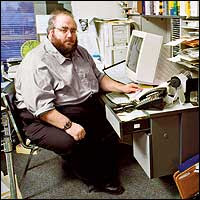 Pitcavage in his natural state. Back in the 90s, he used to have a pet called "Sparky the Militia Watchdog." Rumor has it that one day Pitcavage sat on him and didn't notice that the poor dead creature was stuck to his ass for three and a half weeks.The three-percenters apparently get their name from the notion that 3 percent of American colonists took up arms against the British crown during the Revolutionary War, according to the Three Percenter’s Club on Facebook, which has more than 17,500 followers.“The (three-percenter) honors and is sworn to uphold and enforce the Constitution of the United States of America... (Three-percenters) are soldiers who have sworn to defend this country against all enemies foreign and domestic,” the groups says on its “About” page.Followers sometimes call themselves “Oath Keepers” and associate with self-described pro-militia “patriot” groups that support gun rights and “engage in groundless conspiracy theorizing,” including the idea that the Sept. 11, 2011, terrorist attacks were perpetrated by the federal government, according to the nonprofit Southern Poverty Law Center, which tracks hate groups.MBV Note: What horseshit. Oath Keepers may be Threepers and Threepers are certainly oath keepers but they are two distinct groups -- one an organization, the other a movement without membership lists or dues. And quoting the Southern Preposterous Lie Center claiming we're 9/11 Truthers is just more conflation and smearing. I, for one, am NOT a Truther. As for other "groundless conspiracy theorizing" I have had little experience, unless you count Fast and Furious. It ain't a theory if it's a real conspiracy.It was not clear if the disciplined officers belonged to any particular three-percent group.
Pitcavage in his natural state. Back in the 90s, he used to have a pet called "Sparky the Militia Watchdog." Rumor has it that one day Pitcavage sat on him and didn't notice that the poor dead creature was stuck to his ass for three and a half weeks.The three-percenters apparently get their name from the notion that 3 percent of American colonists took up arms against the British crown during the Revolutionary War, according to the Three Percenter’s Club on Facebook, which has more than 17,500 followers.“The (three-percenter) honors and is sworn to uphold and enforce the Constitution of the United States of America... (Three-percenters) are soldiers who have sworn to defend this country against all enemies foreign and domestic,” the groups says on its “About” page.Followers sometimes call themselves “Oath Keepers” and associate with self-described pro-militia “patriot” groups that support gun rights and “engage in groundless conspiracy theorizing,” including the idea that the Sept. 11, 2011, terrorist attacks were perpetrated by the federal government, according to the nonprofit Southern Poverty Law Center, which tracks hate groups.MBV Note: What horseshit. Oath Keepers may be Threepers and Threepers are certainly oath keepers but they are two distinct groups -- one an organization, the other a movement without membership lists or dues. And quoting the Southern Preposterous Lie Center claiming we're 9/11 Truthers is just more conflation and smearing. I, for one, am NOT a Truther. As for other "groundless conspiracy theorizing" I have had little experience, unless you count Fast and Furious. It ain't a theory if it's a real conspiracy.It was not clear if the disciplined officers belonged to any particular three-percent group. An anonymous letter sent to The Jersey Journal says that some ESU officers wore a patch saying “ONE OF THE 3 %” and the letter includes a picture of a patch. The letter also says some official ESU patches were altered by adding “3%” to them. The letter also includes a picture of such a patch.Finally, the letter includes a patch with the image of a skull and says ESU officers wore the skull patch and Three-Percenters patches while on patrol.Nalbach confirmed that officers were wearing a patch and said “It was removed because we don’t allow unofficial patches.”The letter also includes an image of a Three-Percenters flag and said it was hung in the ESU gym. Nalbach said he was not aware of a flag.
An anonymous letter sent to The Jersey Journal says that some ESU officers wore a patch saying “ONE OF THE 3 %” and the letter includes a picture of a patch. The letter also says some official ESU patches were altered by adding “3%” to them. The letter also includes a picture of such a patch.Finally, the letter includes a patch with the image of a skull and says ESU officers wore the skull patch and Three-Percenters patches while on patrol.Nalbach confirmed that officers were wearing a patch and said “It was removed because we don’t allow unofficial patches.”The letter also includes an image of a Three-Percenters flag and said it was hung in the ESU gym. Nalbach said he was not aware of a flag.
Poll: Do you agree with Jersey City's actions in dealing with a clique of "Three Percenters"?
Sunday, April 28, 2013
"A tale of 2 nations: Patriots and Patricians"
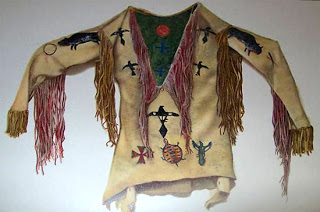
A Sioux Ghost Dance Shirt. It did not stop the white soldiers' bullets.
Patrice Lewis asks, what if 225 million Americans simply said 'NO'?
Ms. Lewis left out two important classes of allies that the patricians have: the proles who exist on their handouts derived from their thefts from us patriots and the praetorians who guard them. The patricians will launch both at our throats if we say "no" without also having the means to resist them in our hands and ready to use. To think we can simply say "no" without violence is naive and sets the predicate for defeat. As for myself, I do not want to be remembered as some latter-day practitioner of the "Ghost Dance" at some future Wounded Knee Massacre. I prefer to win.
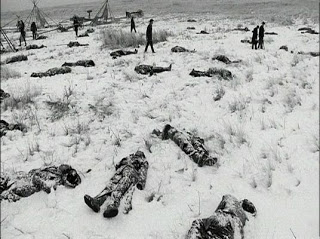
December 29, 2012 marked the 122nd Anniversary of the murder of 297 Sioux Indians at Wounded Knee Creek on the Pine Ridge Indian Reservation in South Dakota. These 297 people, in their winter camp, were murdered by federal agents and members of the 7th Cavalry who had come to confiscate their firearms “for their own safety and protection”. The slaughter began AFTER the majority of the Sioux had peacefully turned in their firearms. When the final round had flown, of the 297 dead or dying, two thirds (200) were women and children. -- The Zen Gardener.
Anniversary: The Eve of the Fall of Saigon
In my travels to the northeast, I was grateful to meet several escapees from Communist tyranny -- from South Vietnam, Albania and Czechoslovakia. It was the Czech woman in New York who most impressed me. Her father had been a loyalist of Jan Masaryk and had fled the country after his murder by Soviet intelligence in the Coup of 1948. To punish his family when they couldn't get hold of her father, this then-young girl was thrown in prison for two years. It was humbling as she thanked me for speaking about the lies of collectivism at the New York Oath Keepers meeting. (It was live streamed but I don't know if a copy exists on the Web.) The conversation reminded my of my own past sins and so, on the anniversary of the eve of the fall of Saigon, I would like to reprint a piece from four years ago, when the blog was young: A Missed Anniversary: "Vous les Americains Sont Pires que les Francais."
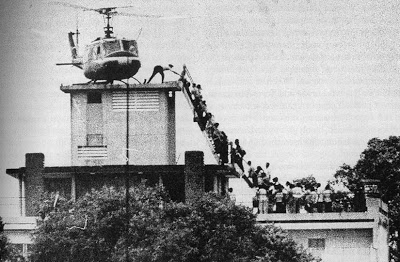 29 April 1975
29 April 1975April is a month of bittersweet anniversaries. 19 April of course marks Lexington and Concord, the Warsaw Ghetto, Waco, Oklahoma City, and in certain drunken ATF debaucheries, the birthday of their patron saint, Elliott Ness. The picture above marks another event, the fall of Saigon in 1975. This photo was taken 29 April. Saigon fell the next day on the 30th. Phnom Penh, Cambodia had fallen about two weeks before.
I missed marking this anniversary this year. I don't know why. The memories always hang heavy on my heart. This is not merely because it was hardly my country's finest hour, but because I bear personal guilt for it. You see, as the NVA gradually overran South Vietnam and the Khmer Rouge overran Camodia, I cheered the fall of every province, marking them on a map. This was during my Benedict Arnold period, when I was a communist and an avowed enemy of the constitutional republic of the United States. As a member first of the peacenik anti-war movement which I joined in 1967, then later the Students for Democratic Society, the Young Socialist Alliance, the Socialist Workers Party, the Workers Action Movement and finally the Maoist Progressive Labor Party, I had demonstrated, leafleted, marched, rioted, been tear gassed, billy clubbed and briefly, arrested (but later released without charges), eight years of street-level radicalism, all with an eye toward this day.
Toward the end, I became a member of the PLP's "secret party," dropped from public view and on instructions began to organize a "worker's militia" in central Ohio. We'd start out vetting new members by having them break into National Guard armory parking lots and slash vehicle tires. In the end, we'd rob dope dealers to raise the money to buy weapons, all kinds of weapons. We were very good at what we did. And very, very lucky. Don't believe me? Most of my "Benedict Arnold" period papers are part of a collection at the Ohio Historical Society. Look it up. You can look up the statute of limitations too. Nobody died. Like I said, we were very, very lucky.
So when Cambodia and South Vietnam fell, I was one of the happiest traitorous bastards around. I just hoped "the Revolution" would start here in my lifetime. Yeah, I was that stupid.
I suppose I would have continued on being terminally stupid until I became stupidly dead, if it hadn't been for a kindly old ex-Wehrmacht surgeon named Richter who, at the end of his life, decided to wrestle the devil for my soul.
My day job, when I wasn't buying or stealing guns for the communists, was as a hospital aide at University Hospital in Columbus, Ohio. I was on my first marriage, then, though my son Matt had not yet been born. Richter (I am ashamed to say that at this remove I am not even absolutely certain that was his real last name -- I always addressed him as "Herr Doktor" and what few papers, reading lists and so that he had given me were apparently discarded during the split with my ex-wife) was a patient of mine, come to OSU to get a second opinion from an American neurosurgeon he trusted.
It was the two weeks between Christmas, 1976, and the New Year, 1977 that this occurred. Nothing much happened over the holidays, and here he was, stuck in another country, far from the Germany he loved. I wonder now if he saved me because he was bored and had nothing better to do. He knew that I needed saving because he was a major fan of the United States system, which had just that year seen its bicentennial. That was the question that he posed to me first, I know.
"What," Herr Doktor asked in that slightly accented and very precise English that he spoke, "did you think of the 200th anniversay of your independence?" He always had this half-smile, but with a professorial air that demanded manners. I had a Czech refugee for a history professor once before (1971) who had the same mein. Like Vlad Steffel, Herr Doktor commanded respect.
I blew him off, though, with a stupidly shallow answer about America as a force for evil in the world which would, I was sure, soon be turned back by the forces of, I probably used the commie term "people's war." Herr Doktor was mildly amused and offered to dissuade me of that theory if I would just show him the courtesy of reading some books and articles and discussing them with him during and after my shifts. I agreed. It was the unintentionally smartest thing I ever did in my life.
We began with The Road to Serfdom by Hayek. I have always been a quick reader, but my mind rebelled at the points where Hayek's analysis diverged from my own adopted dialectical materialism, which is to say, everywhere. The first time I tangled with Herr Doktor was in the cherished notion I had that it was Soviet Communism that defeated the Nazis. The Communists were the real heroes of World War II, didn't he know that?
Herr Doktor brought me up short with the observation that he had seen that conflict up close and I was dead wrong. For two days, I think, we went back over the events of his life. His German Catholic family, always doctors or academics for hundreds of years. The decadent Weimar Republic, the street fighting, the longing for order, Hitler's rise, the early clashes between the Nazi Party and the Catholic Church, the sellout of the German Catholics by the Pope, how he missed the Hitler Jugend because of his age but was impressed into the Wehrmacht as a surgeon in 1939, all of these were mere prelude to his vivid description of the tragedy of millions of young men dying in the snow, killing each other for two sides of the same collectivist coin. His escape from Stalingrad on one of the last Junkers to leave the kessel. The crimes of the Nazis. The crimes of the Soviets, and later of the East German communists. "Two parties, same faces," he pointed out. Any Nazi who wanted to live in the new system had merely to declare his conversion to Marx, Lenin and Stalin and become what Eric Hoffer dubbed a "true believer." Hoffer was another title Herr Doktor recommended.
We got fairly well along in my conversion before he left to go home to Germany to die. It was ironic that it took a foreigner to teach me how little I really knew about my own country's history. I dove into his reading list, putting it together with things in the press, things I'd observed, first as a radical then as a communist. This wasn't trading one commissar for another gauleiter or vice versa. It was becoming educated in the Anglo-American concepts of individual liberty, property, commerce and polity. It was being reminded of the Judaeo-Christian roots of all of it. It was from Richter that I realized first that while a man cannot choose the time he lives in, he can choose how he lives up to that time. And yes, Herr Doktor's reading list included Rand, Locke, Adam Smith, Tolkein and C.S. Lewis.
No one analysis fit the reality of the world, said the Doktor, you must evaluate the facts and the truth, which is sometimes unsupportable by mere facts, and make your own judgments.
The sum total of what Herr Doktor taught me subverted completely my belief in communism, which from my own experiences had become somewhat cynical and jaded anyway. I handed off my assignment and, more's the pity, the arms dumps, to my second in command. If I hadn't he probably would have killed me. He wanted to anyway, me being a traitor to the class struggle and all. (That, plus the fact that I had in my head enough evidence to send about six men and three women to federal prison for a very long time.)
Of course I didn't tell them that this was because I had a crisis of conscience. I lied and told them I was just burnt out and that my wife was about to divorce me. This was more or less true, but still a lie. However, the first thing you're taught when you get to be a killer tomato (red thru and thru) is that it is OK to lie to anybody about anything if it advances the party's goals. So given that, lying to liars was even expected, in a way.
Anyway, I got out and never looked back. That didn't mean I wasn't constantly haunted by the reality of what I had done.
Chieu Hoi and Hoi Chanh.
Flip back up to that first image above, the evacuation of the American embassy in Saigon. Consider the awful reality of two countries left to people who were hardly little Jeffersonian democrats, and who set about proving that in the worst possible ways after our choppers had gone.
I once did a radio show with Dr. Russ Fine, who then had the evening call-in show on a certain station here in Birmingham. David Horowitz' book Radical Son had just come out, about his conversion from being a red diaper baby into a real American. David was pimping his book and Russ was happy to talk about it and to have someone experienced from that period of history to chat with Horowitz as someone with similar background.
After exchanging bona fides about the extent of our previous sins, I asked him the question that had, since my encounter with Herr Doktor Richter, most preyed on my own mind:
"David," I asked, "do you ever feel Benedict Arnold looking over your shoulder?" He was quiet for a moment, you could hear the slight crackle of that long phone line to California. Then he said, slowly, solemnly, "Yes."
"But if you're like me, you'll never get caught on the wrong side of your faith or the Constitution again, will you?"
"No," he replied firmly, "I won't."
"Chieu Hoi," I replied, "Hoi Chanh."
David understood the reference.
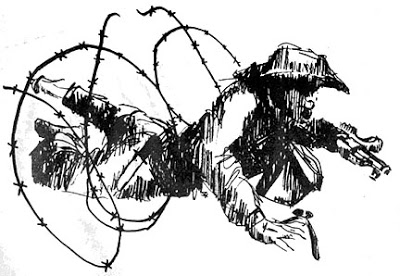
Chieu Hoi means "open arms" in Vietnamese, the name of a program designed to recruit ex-communists to the South's anti-communist fight. Someone who entered the Chieu Hoi program became a Hoi Chanh, a returnee. In Vietnam, many became Kit Carson scouts and worked alongside American and South Vietnamese troops.

And believe me, there is no greater anti-communist than an ex-communist. We know all the lies, first hand.
We also know that we can't go back.
We have burned our bridges and will live or die on the ground we have chosen. Of course twelve-step ex-leftists like Horowitz and me aren't brave at all compared to the Kit Carsons, nor did we recant in the expectation that we were joining a losing side like George Orwell or Whittaker Chambers. THOSE guys changed sides in the belief that while it was the right thing to do, they were probably joining a losing cause. Both were under the impression that either Sovietism or fascism was going to win in the end. But still they denounced the lies and stood on the truth, expecting death at the wall or in a ditch rather than reward. (Orwell's Homage to Catalonia and Chambers' Witness were both on Herr Doktor's list.)
And one other thing. As near as I can tell without a god-like glimpse into other men's souls we are all, we ex-communists, motivated by guilt at what we did in the name of totalitarianism. This guilt we must expunge by our every action for the rest of our lives. We cannot backslide, we cannot be fooled, or fool ouselves, into believing the lies ever again.
Don't believe me? Let me give you an example of the depth of my own guilt, something I am reminded of often, but particularly on anniversary days in April.
"Vous les Americains Sont Pires que les Francais."
"Vous les Americains Sont Pires que les Francais" is the title of Chapter 27 of Never Fight Fair!, an oral history of the SEALS by Orr Kelly. Chapter 27 is a reminiscence of William G. "Chip" Beck, who served as an advisor with the Cambodian Army as it fought a desperate battle against the Khmer Rouge rebels from January 1974 until that fatful April 1975. Beck tells the story of the heroic resistance of the anti-communist Cambodians and especially of one man, Khy Hak who most exemplified and personified that resistance. An excerpt:
I was an advisor to the 11th Cambodian Brigade at the time. I was the only American in Kompong Thom, this little town in central Cambodia. There were two other foreignrs there -- a Norwegian doctor and a French priest. He had been there twenty-eight years and spoke Cambodian like a native. We used to call his congregation "the Christian soldiers." After he said Mass, he would go out and show them how to put up a machinegun emplacement with effective cross fire.
I had responsibility for an area between Kompong Thom and siem Reap, where Ankgor Wat is. I used to travel back and forth in that whole northern area.
I started out based in Siem Reap but I was so impressed by the quality of the officers and what they were doing with the men in Kompong Thom that I went back to the embassy and told them they needed a full timer down there with the 11th Cambodian Brigade. They agreed.
The provincial governor was also a general whose name was Teap Ben. He was the political provincial advisor and senior military person. The man in charge of most of the combat forces was Col. Khy Hak, probably one of the two military geniuses I have met in my life. The guy didn't go to school until he was eleven years old and ended up completing the national military academy at age eighteen at the top of his class.
Khy Hak had studied everything from Napoleon to Mao Tse Tung. In his library I found these huge books on the Napoleonic battles. There were maps where he had drawn in red and blue where the troops had gone and where they had made their mistakes. He could think in strategic terms. He could send massive troop units going out but also have his men infiltrate into the Khmer Rouge as guerrillas. He could fight as a guerrilla or a major tactician.
When the war started, these two guys were at Siem Reap, a little outpost. They were maybe a major and a captain at the time. That became one of the few places where, when the North Vietnamese and the Khmer Rouge started running over Cambodia, they didn't get very far. They were not guys who sat in there offices and worried about their next corruption deal. They would go out and fight with the troops.
Khy Hak got wounded, for the first time in his life, during the battle for Ankgor Wat. Instead of being evacuated, he had his men put him on a door amd carry him into battle while he was still bleeding. It was an incredible battle because Khy Hak has a sense of history. He didn't want to use heavy artillery to take out the North Vietnamese because he was afraid of destroying the historic ruins of Ankgor wat. So he had his men go in and fight hand to hand, tactical, down and dirty.
Kompomg Thom had been overrun and almost taken by the Khmer Rouge in 1973, the year before I got there, and when they sent Teap Ben and Khy Hak, literally, the Khmer Rouge were in downtown Kompong Thom. The helicopter flew these two guys in, wouldn't even land, as the troops were fighting to get back into the city. Literally, they retook the city house by house.
By the time I got there, the Khmer Rouge were still surrounding the town and attacking it, if not every day, every week. I was just so impressed by what was going on I decided to make my own headquarters there. The longer I stayed and saw what they were doing, the more impressed I got.
At one point in the dry season, Khy Hak had had enough of being surrounded by the Khmer Rouge and said he was going to take back the territory beyond the town perimeter. . . Khy Hak decided he and his brigade, under cover of darkness, would walk out of Kompong Thom along Highway 5 and wreak havoc among the Khmer Rouge. And they did. In the course of three days they walked a hundred miles and they brought back 10,000 people from among the Cambodian population. By the time a month and a half was finished, they had brought back 45,000 people from the communist zone, brought them back into a little town that previously had only 15,000 people in it.
When Khy Hak went out there, he didn't force the people to come back at gunpoint. He would get up on a tree stump or a chair and talk to the villagers.
He told them, "Look, there's corruption in the government, there's corruption in the army. But if you come back I will try to protect you. The Khmer Rouge willl try to stop you from going. I will help you get back. Once you reach safety in Kompong Thom, they will try to attack us and kill you. I will try to protect you. It's going to be hard to feed you. You will have to grow your own crops. We can't count on anybody but ourselves. But you know what it's like out here under the comminists. Choose. Make your choice."
And they made their choice, by the thousands.
I flew out in a chopper after the operation got going and I couldn't believe my eyes. . . I stayed out there with troops for three days. I really wasn;t supposed to but Khy Hak challenged me, "How do you know that I won't lie to you? Or someone will ask you if I'm lying. See for yourself. You can tell them the truth." so I stayed there . . . As Khy Hak had predicted, the more refugees we got into the town, the more of a political embarrassment it was for the Khmer Rouge. They intensified the pressure on Kompong Thom in March and April of 1974. . .
(Short of rice for the refugees and unable to get enough from USAID, Khy Hak staged a raid out into the countryside)
. . . in an area where the Khmer Rouge had been stockpiling rice they had taken from farmers. . . As we were pulling out, some mortar rounds started falling. Khy Hak got on the radio -- the Khmer Rouge had the same radios he had -- and issued a challenge: "This is Col. Khy Hak. Here is my precise position. I will wait here for one hour. There is no need for you to shoot at unarmed civilians who can't defend themselves. If you want to fight somebody, fight me. I will wait. If you are not here in an hour, I will figure you are too afraid to do it."
They didn't come. . .
(Beck tells the story of the bloody and heroic defense of Kompong Thom against overwhelming numbers of Khmer Rouge.)
The day the seige of Kompong Thom was broken, with three hundred Khmer Rouge left dead on the battlefield, the headlines in the world press, one major newspaper -- I can't remember which one -- said: "Rebel rockets hit Phnom Penh; Three Killed."
These defenders had killed three hundred to one thousand enemy soldiers in bloody combat but there was never a story told about this.
For the rest of the dry season, things were pretty calm there. Khy Hak was promoted to general the final year, in 1975, in the final months in Phnom Penh.
He and I had worked out a plan where I would take his wife and children and set them up on an escape route I had set up in northern Cambodia for the civilians.
I didn't know when Operation Eagle Pull (the American evacuation) was going to go. When I found out, I was several hundred miles away from his family. I couldn't get to them directly. I had somebody else go over to the house to ask Mrs. Khy Hak to leave with them. She refused. She didn't know her husband wanted her to leave.
By the time he was able to get back to Phnom Penh, to the center of town as the perimeter was falling, there was no way to get her out. He put his wife and his five children -- beauitful little children, from four years old to eight -- in a jeep. The Khmer Rouge caught them approaching the airport and took them over to a pagoda.
One of my Cambodian soldiers who went back in and talked to witnesses said they killed the little kids. They executed the children, then they shot his wife. After making him witness that, they executed him. So they got their revenge on him.Chip Beck's sketch of General Khy Hak.
We then started hearing of many atrocities being committed. (After Phnom Penh fell to the Khmer Rouge on 16 April 1975, as many as four million Cambodians were slain by the victors over the next two years.) The Khmer Rouge would get on the single sideband radios that had been part of the military network. After the Americans had made the evacuation in Eagle Pull, the Khmer Rouge would get on the radio and hold the key so you could hear the office people being tortured and murdered on the air. . .
Unlike Vietnam, the Cambodians could have held out. We, the advisors, were told we could supply the Cambodian army as long as they could fight. That's what we told them. After we evacuated the country, that order was rescinded.
The French died at Dien Bien Phu. They were soundly defeated but they fought and we just went out the back door.
We, the advisors who had lived with these people, sometimes for years, had to sit there and listn to them on the radio calling to us, saying, "Where are our supplies? We're still fighting. We're holding out."
Finally they ran out of ammunition. That's the only thing that made many of these people surrender and then they were executed by the Khmer Rouge.
One of the last transmissions -- the last transmission I ever heard out of Cambodia -- was a Cambodian colonel, just before they killed him. You could hear them breaking down the door. You could hear him say, "Vous les Americains Sont Pires que les Francais." -- you Americans are worse than the French.
Recovering your conscience too late.
Yes, we were. And I was among the worst. I CHEERED the murderers on. I did my best to make THIS happen.

And THIS.
.jpg)
And THIS.
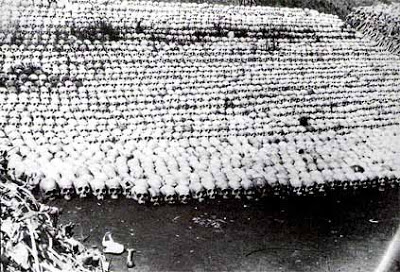
Do you begin to understand the guilt for someone who has recovered his conscience too late? The blood of Khy Hak's family is on my hands, just as the blood of Russian kulaks was on Whittaker Chambers' hands. When you recover your conscience, the only thing you can do is make sure, to the best of your ability, that it never happens again.
We do not choose the circumstances of the world we live in, yet we must react as best we can to its challenges. For me, I have no choice. I must continue to walk along the path Herr Doktor Richter showed me more than thirty years ago in that hospital room on Nine East. My fate was set, and my Master selected, when I turned my face from pagan collectivist evil under the patient tutelage of a wise, slight-statured old man with a perpetual smile and white hair.
I can never and will never go back.
So when somebody whispers in your ear, "Well, you can't trust him, he used to be a communist," think twice. For he may be the only one who sees clearly enough to point your way through the minefield of bad choices that collectivism -- any and all collectivism -- represents.
And when I cross over to that place my Master has chosen for me, I can only hope Khy Hak is there, so I can finally beg his forgiveness for the sins of my youth. Until then, I will think of him and the millions like him every April, when spring reminds me of my guilty complicity in collectivist mass murder.
Subscribe to:
Posts (Atom)
